This is the true story and history of the very short-lived ITF “color” uniform of the early 1980s. We have interviewed black belts, masters, and students of the time, and gotten the history, the material, and reasons behind the uniform. The reason why it was never implemented, the exact amount of orders for the uniforms (and prices paid per), the material used, and why General Choi pushed the uniform for a short time. Over 50 people were interviewed for this article that now spans 3 decades to write it!
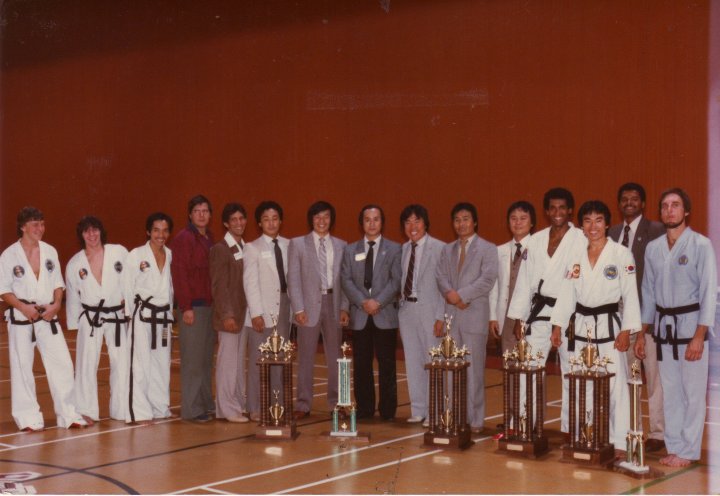
Learn what the material was made of and where it came from
- Learn the importance of the material
- Learn the exact amount of uniforms made (for American distribution) and the price per
- Learn what the color was supposed to be!
- Learn why they never lasted long!
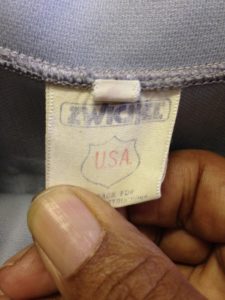
One of the original labels is one given by Gen. Choi to instructors. The tag has a label that shows “USA” but notes it doesn’t say made in the USA which is a way the DPRK got their products sold elsewhere. This also shows the color up close, clearly blue not grey!! Photo is by Grandmaster Mack Newton, Phoenix AZ, USA - Learn the real reason Gen. Choi considered this uniform, and then why he chose not to!
- Learn the real reasons why they were never posted in any publications, other than a few pictures here or there.
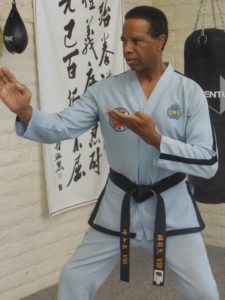
Close-up photo of the BLUE uniform, not grey! This was taken in 2016 from the original uniform Gen. Choi gave to Master Mack Newton. 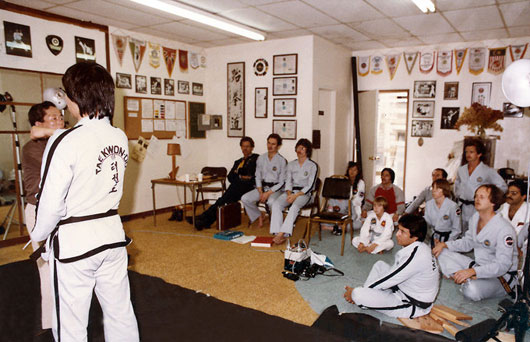
Photoshoot at Sabree Taekwon-Do in , CA USA
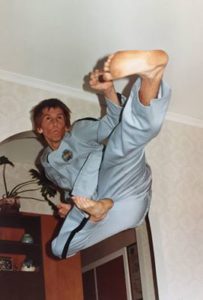
It is a little-known fact, that at one time (believe it or not) the ITF under Choi, Hong-hi with the “strong suggestion” of the DPRK, wanted and tried unsuccessfully to get into the Taekwon-Do dobok (uniform) business, but they have met with some limited success with other things since.
This was done at the beginning of the North Korean involvement with the ITF. Some uniforms were made in North Korea, there was a small portion made in the USA with the fabric “donated” to the ITF from the DPRK, the ITF sold it to a Korean-owned USA-held manufacturer of uniforms and martial arts equipment. Some uniforms were made in Eastern Europe and a very small amount by a company in Western Europe. Less than 1000 uniforms outside of North Korea were made, based on the information I could obtain.
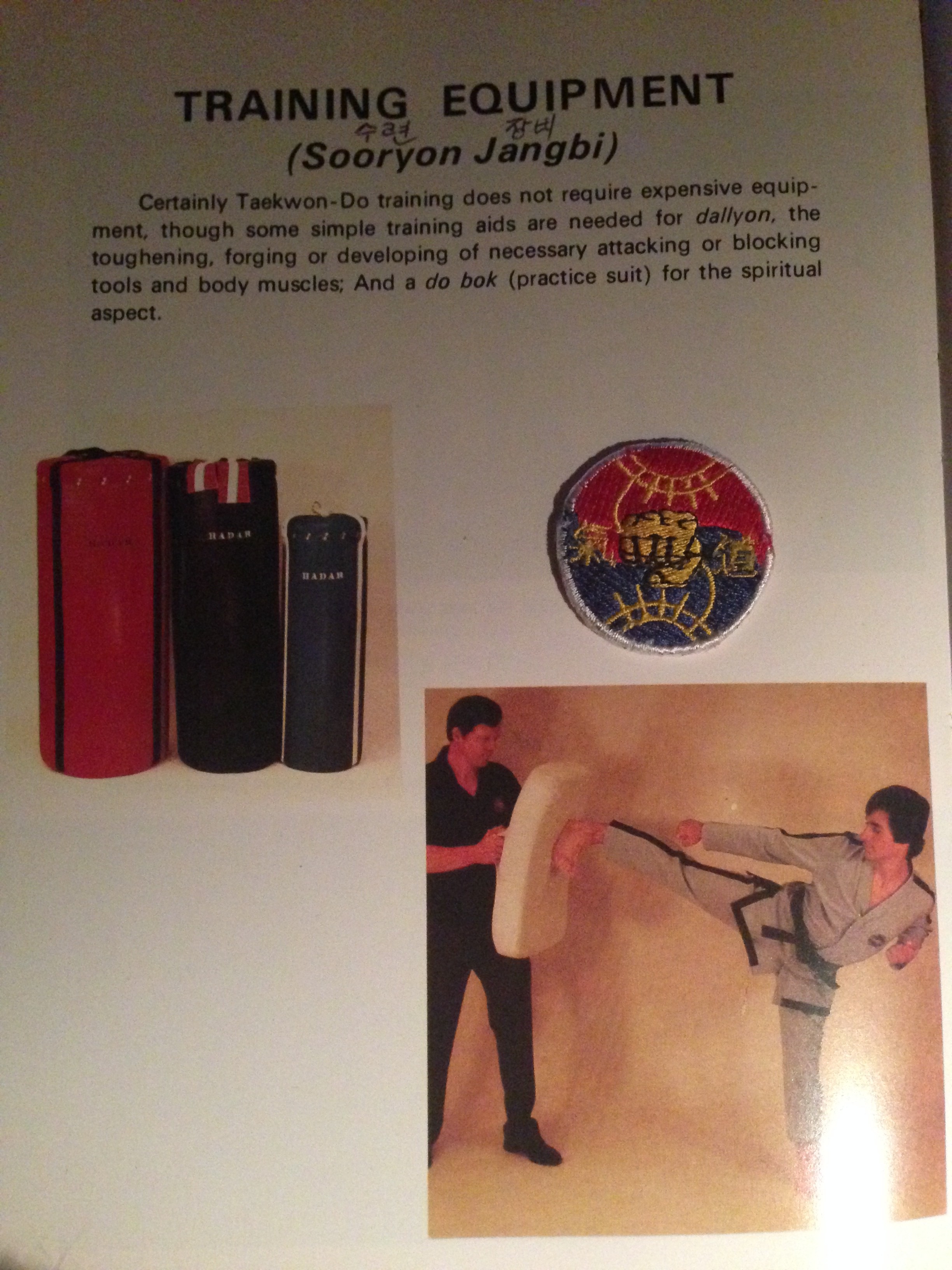
Now, of course, these uniforms never made it into mass production, and they were almost all worn by North Koreans who started to “export” Taekwon-Do after the training of Taekwon-Do started a few years prior, by then Master Park, Jung-Tae, and Choi, Jung-Hwa (son of ITF founder). The exception is, that several uniforms were given to members that were helping Choi, Hong-hi with the 1983 set of the 15-volume Taekwon-Do encyclopedia set. Sallah Sebree, Mike McCormick, and several others wore these uniforms for the photo shoot. As seen above, two photos, the only two in any “official” ITF publication made it in the 1983 set of the 15-volume Encyclopedia set (Vol. 2). However, it was not described several pages later when it discussed the uniforms. The uniform described were the ones with dextran/cotton which was a newer material for uniforms at the time and were shortly replaced with poly/cotton blend for a better wearing uniform and lighter weight than the duck cotton or regular cotton uniforms previously used.
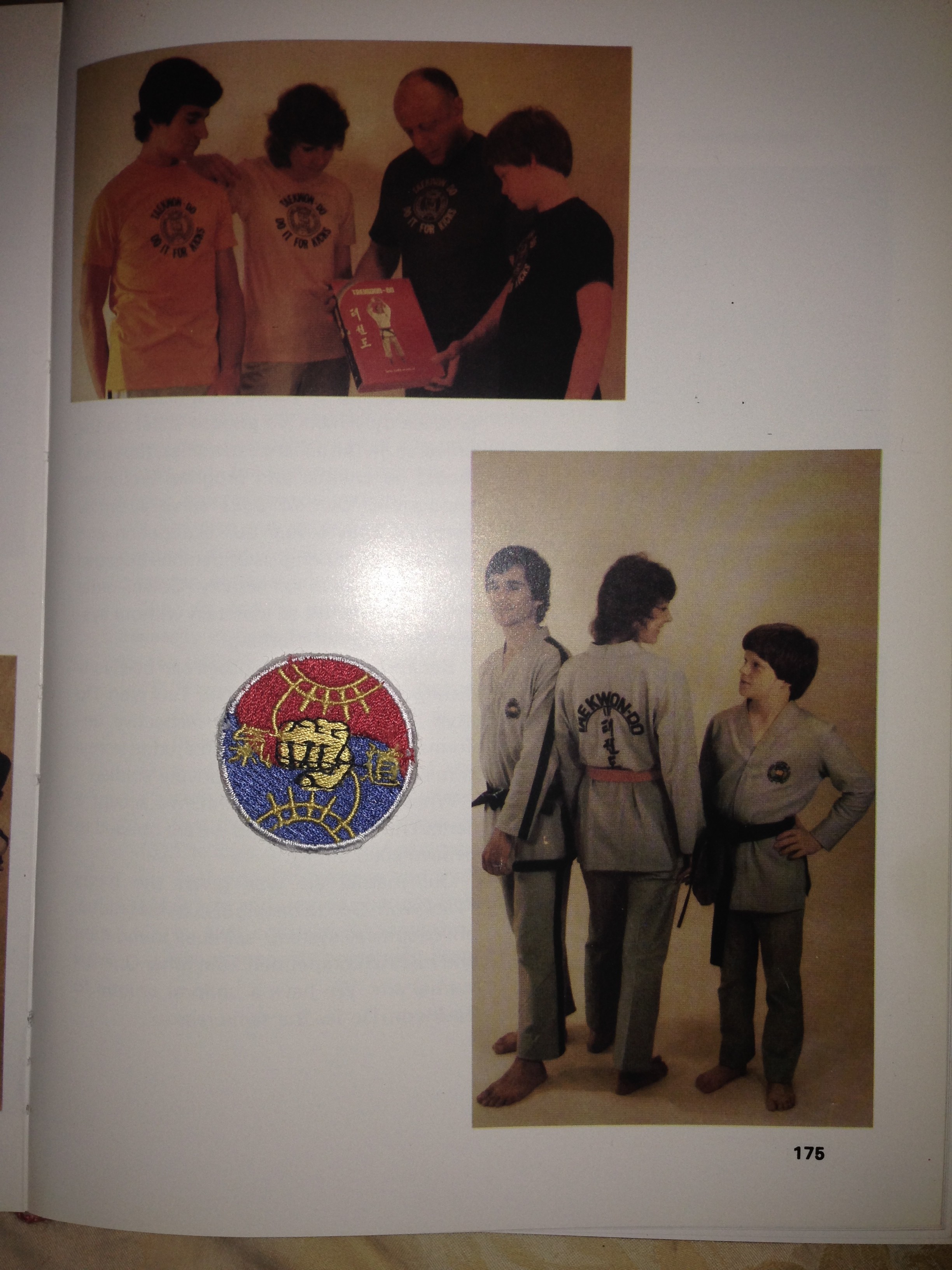
The issues with these uniforms were they felt a lot like pure polyester and were stiff, and very shiny. The material did withstand a lot of abuse, but, felt nothing like the uniforms that all users were used to, this was also about the same time that the “center closed” uniforms that have become the ITF “trademark uniform” with the Velcro® or zipper front.
The uniforms were not polyester, as they were purposely portrayed to some, but rather, another synthetic fiber using polyvinyl alcohol, anthracite, and limestone! Polyvinyl alcohol or PVA is used widely and is used in such things as bags, play putty, eye contact solutions, and more is a huge advantage…doesn’t require oil to produce this plastic-like material, like most other plastics, which is a huge advantage in North Korea, where they have zero oil producing areas, and must import all their oil, mainly from China and Russia! Of course, most know what limestone is, it’s a sedimentary rock, widely available and abundant especially in rocky North Korea. The other ‘ingredient’ is anthracite! Those who live in my area of the country know well what this is….it is commonly referred to as coal! Another mineral that is readily available in North Korea, they are infamous for using slave labor to work their coal mines. These uniforms were also to be a light blue color and not grey, but during the dying process and the material used…..they turned grey!
Below you see Mr. Jan-Erik Lehn wearing the new ITF Blue uniform, you can see the contrast and color with the traditional white in the background.
Breaking a 10 cm Leca (Light Expanded Clay Aggregate) block.
Performed during a demo in Gyllenborghallen, Tromsø, Norway in 1983.
Vinalon is a fabric made with PVA, limestone,e, and coal! It was first developed while Korea (north & south) was one and under the control of the Japanese Empire in 1939 after some Korean and Japanese scientists learned of the synthetic fabric called nylon. Vinalon is widely used in North Kore since it can be produced locally (nationally) without any imported materials. The fabric didn’t get its start until after the Korean War, and with the push of the Juche Philosophy of “self-sustenance in economic endeavors” after 1955 when Kim, Il-sung first mentioned what would become the Juche ideology.
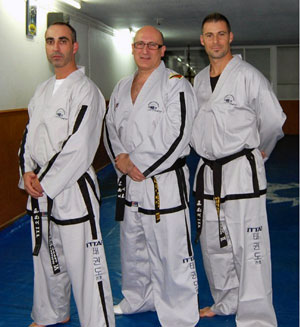
Today, the ITTAF under Master Mario Pons is “bringing” back these grey uniforms, however, the material is different as the manufacturer is based in Spain, and according to their catalog, they are using a 65% polyester and 35% cotton blend, which is now a standard fabric used in Taekwon-Do/martial arts uniform construction.
Master Pons states that the uniform that Gen. Choi wanted was light grey, however, this isn’t true. While the uniform that was produced was light grey, it was supposed to be light blue! During the dying process, the uniform because of the material turned light grey and not light blue. The blue color was to be in line with the UN blue (but slightly lighter) as Choi felt that blue was a color of peace and harmony, and also, blue is and was then used by a good majority of countries as well, interestingly enough blue was used in the Oh Do Kwan banners, the 29th infantry Division Patch and of course, most of you know too the Chung Do Kwan means “Blue Wave School”. And as anyone that knew Gen. Symbolism is a major component of their mindset Choi and any Korean of his generation!
The ITTAF website denotes “The dream of General Choi Hong Hi to implement the gray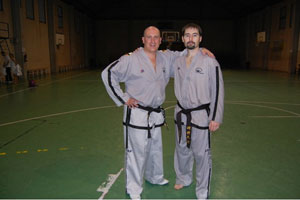 dobok was that his Taekwon-Do was differentiated from the Olympic Taekwon-Do and Karate.” However, while no one can say with certainty as Choi, Hong-hi has passed; he never once mentioned this in any of his articles. In all of the “Condensed Encyclopedia,” no mention was made of this uniform, out of the many seminars including the famous St. Louis, USA International Instructors Seminar, no mention, and by then, you saw almost all of the now standard ITF uniforms (the majority in 1987 were still the fold over, but you also started to see the centered closed type then too.)
dobok was that his Taekwon-Do was differentiated from the Olympic Taekwon-Do and Karate.” However, while no one can say with certainty as Choi, Hong-hi has passed; he never once mentioned this in any of his articles. In all of the “Condensed Encyclopedia,” no mention was made of this uniform, out of the many seminars including the famous St. Louis, USA International Instructors Seminar, no mention, and by then, you saw almost all of the now standard ITF uniforms (the majority in 1987 were still the fold over, but you also started to see the centered closed type then too.)
In his autobiography, he also never mentioned this grey uniform, nor in his long interview in Taekwondo Times by GM Kimm, He-young in 2000, before his death. It was also never mentioned in the official ITF magazines or any other official publications except the two photos in the 1983 version.
However, Gen. Choi had said many times, and in print that a uniform wasn’t needed, he
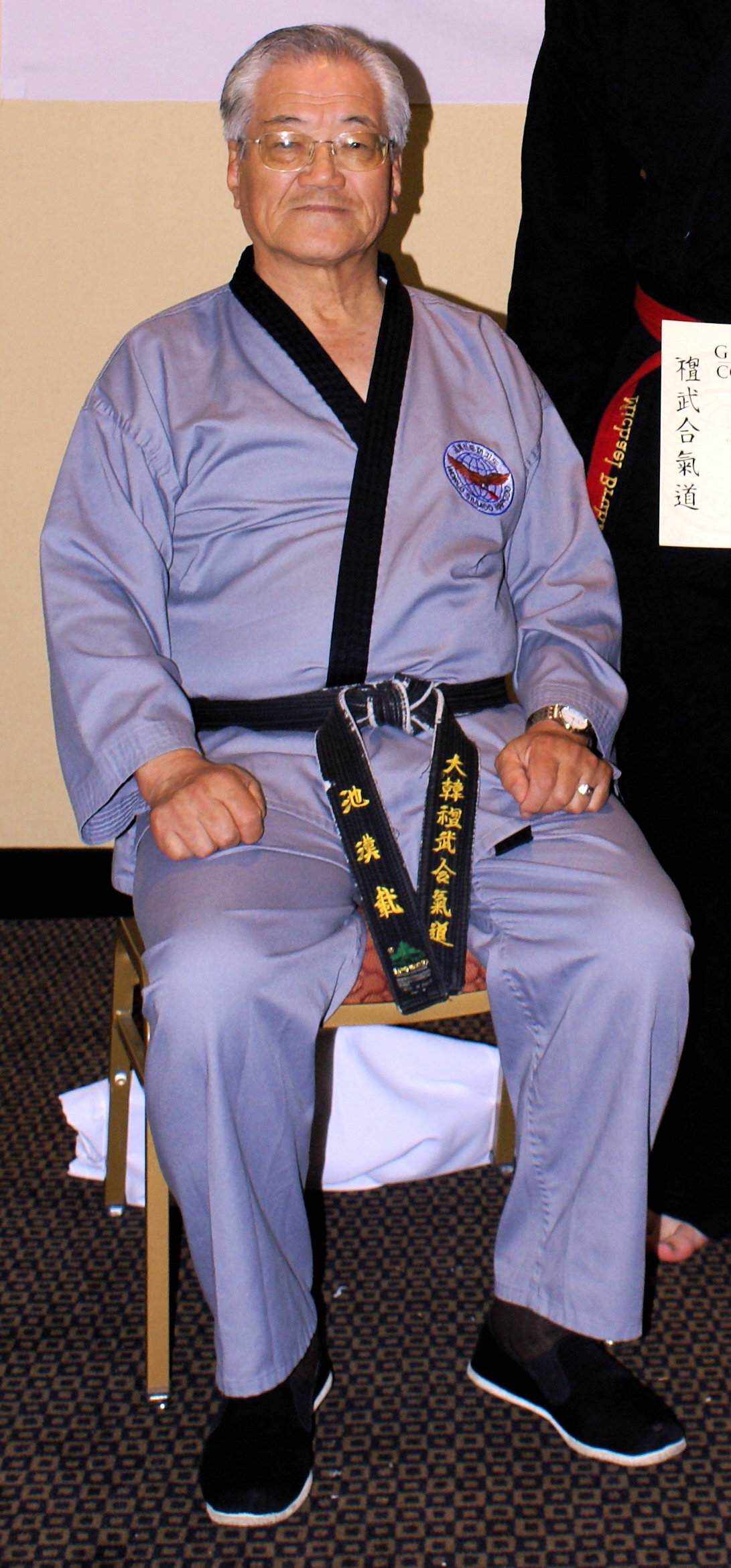
himself wasn’t known to usually wear a uniform while instructing. Usually, he wore a button-up long sleeve shirt a lot of times with a tie, slacks (dark), and usually light socks, and leather shoes. So, why the grey uniform? It’s a great “marketing tool” for the goals of the ITTAF, and many schools of Hapkido including Doju-nim Ji, Han-Jae of Sin Moo Hapkido, and the HKA use a grey uniform as well, however, a uniform does not make you a student, instructor or master of Taekwon-Do! Very few of the original uniforms are even around, several members of the Kido Kwan & the Kido Kwan Discussion Forum have indicated they have or had one, I have not seen one since at least 1990, and the only remnants are those few photos that still are circulating, or in the 15 vol, and condensed books. An interesting side note Century Martial Arts with its Headquarters in Oklahoma City, Oklahoma USA started to sell a grey traditional uniform in about 1988 and stopped them by 1992-94, I had one of these middleweight uniforms as they were perfect for working outside without fear of grass stains, etc.
Grand Master Gwen F. Hall (9th Dan) who took/first taught Taekwon-Do to Panama (She was stationed by the U.S. Navy in Panama) and was given two uniforms by Gen. Choi as she was spreading Taekwon-Do to Central America couldn’t use the uniforms very well in such a hot and humid climate, the standard uniforms worked much better at wicking away sweat and drying so another downside to the uniform, and she conveyed her thoughts on the issue to the ITF as well.
The bottom line, the grey ITF uniforms never caught on, they didn’t catch on because they were very impracticable and very uncomfortable, and with the ebbs and flows of the North Korean economy, they never would have been able to keep up with the supply and demand. It also was not in the best interest of the ITF to have only one supplier. Still, nearly all the ITFs have since pushed for a single supplier, especially that of the Chang Ung ITF by promoting only the SaSung brand of uniform and the ITF of Grand Master Pablo Trajtenberg seems to push Top Pro brand. It isn’t very ‘democratic’ to have only one source. It’s been a proven fact, that when you require everyone to use one source for equipment, you will not only run into manufacturing issues but, everyone in every nation/local would pay a different price for the same uniforms. There are tariffs/taxes and shipping charges that can also inflate the prices and make them very impracticable.
The upside is that the product would/should be consistent, as with today, at any Taekwon-Do event, you could have 20 or more differently constructed, made uniforms. Some could be silk screened, 100% cotton, or 65%poly, with embroidered logos, and then some could have vinyl lettering instead of silkscreen, etc.
I would like to thank the following people who provided some of the information contained within; some of the people interviewed have asked not to be named directly. Many people have provided information for this article; if any omissions are in error please contact the author if any information was left out!
Grandmaster Nam, Tae-hi (now deceased)
Grandmaster Park, Jong-soo (now deceased)
Grandmaster Salleh Sebree (now deceased)
Grandmaster C.K. Choi
Grandmaster Park, Jong-ki
Grand master Kim, Suk-jun
Grandmaster Chung, Kwang-Duk
Robert Walson
Grand Master Gwen F. Hall
Grand Master Mack Newton
George Vitale
Micheal McCormick
AND MANY MORE!
This article is for reference and historical accuracy. It is not an article that is saying one uniform or one manufacturer of uniforms is better, or worse than any other. Although, I would never want to wear the Vanolin/Juche Fiber uniforms, even though I have several tailored made suits of the same fabric.
Director-Kido Kwan
![]()
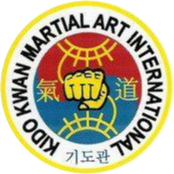

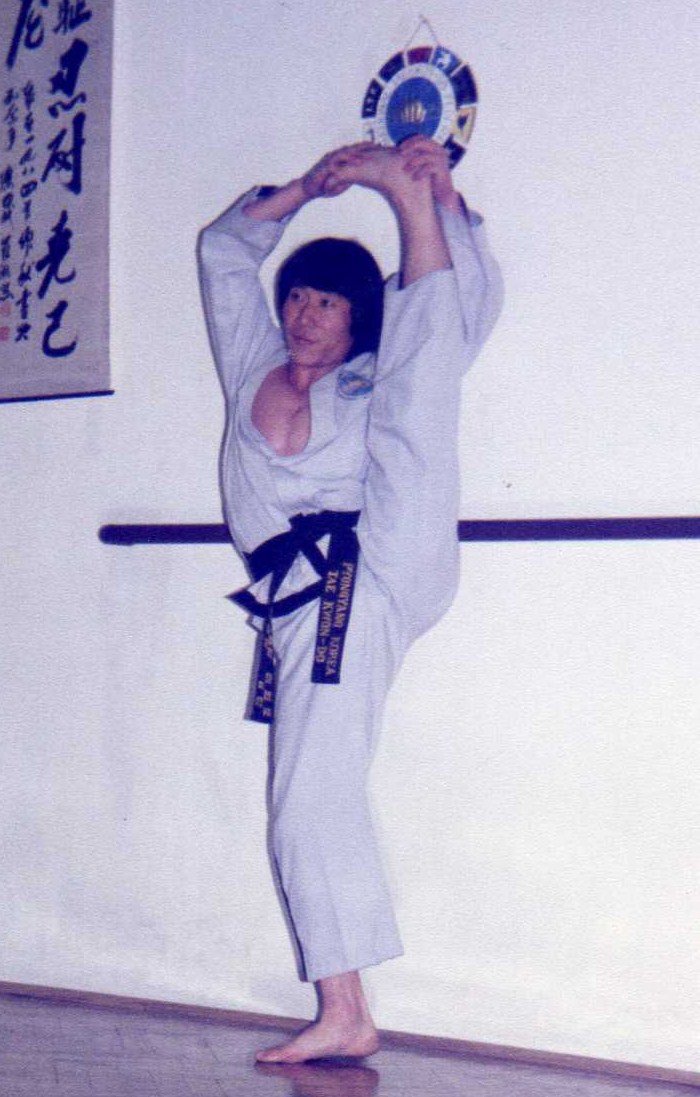
Average Rating